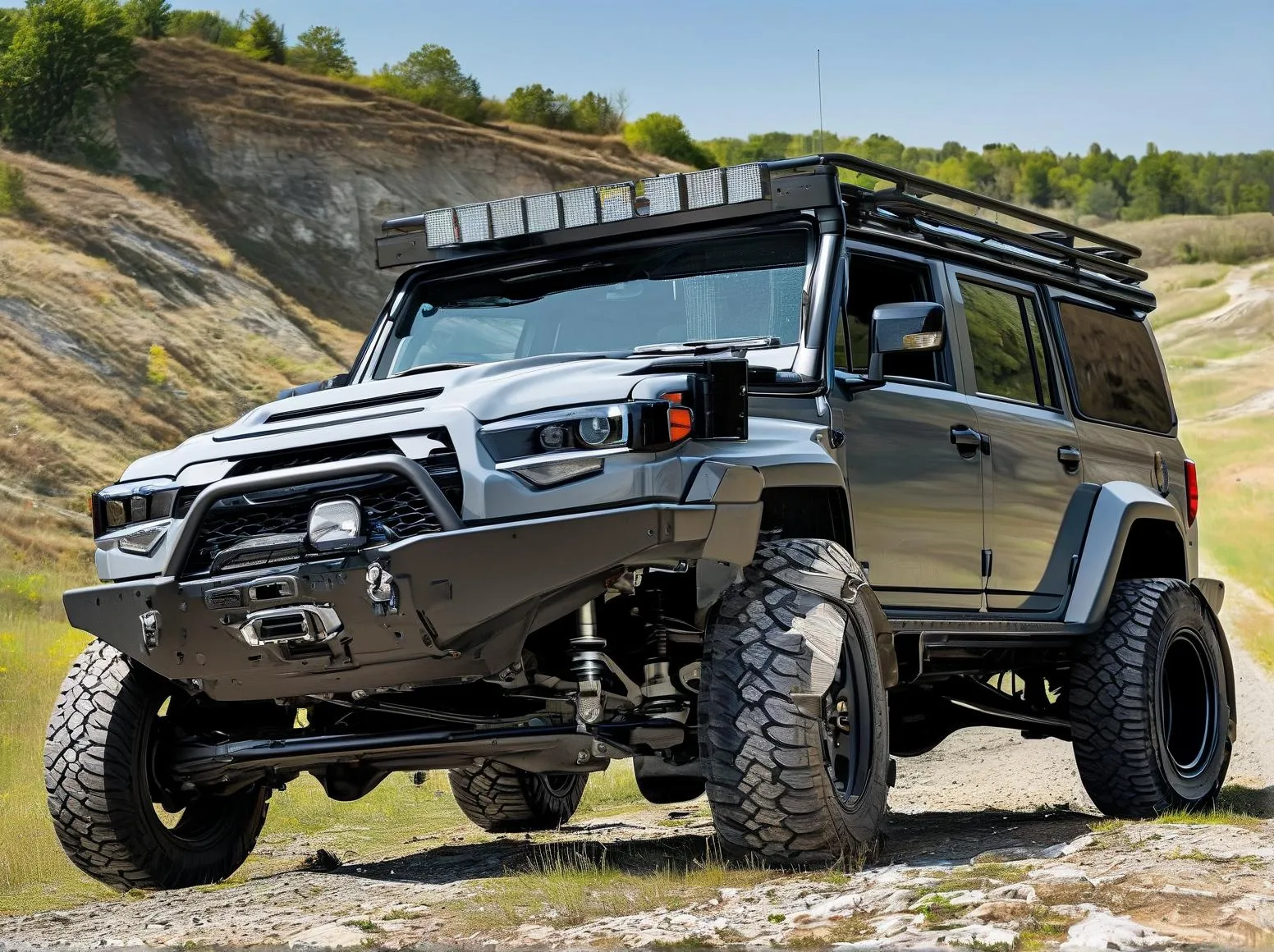The global four wheeler lift kits market is undergoing significant transformation as off-road enthusiasts demand higher performance and durability from their vehicles. With projections indicating a 7.2% CAGR from 2023 to 2025 (Grand View Research), manufacturers are innovating to meet evolving consumer expectations. This analysis explores the driving forces behind the surge in lift kit adoption and what buyers should prioritize when upgrading their off-road vehicles.
Heightened Demand for Off-Road Clearance
Modern adventurers increasingly prioritize ground clearance enhancements to tackle challenging terrains. A 2024 SEMA Market Report reveals that 68% of off-road vehicle owners cite improved clearance as their primary reason for installing lift kits. Key innovations include:
– Adjustable suspension systems (e.g., Fox Racing Shox’s dual-rate coilovers) enabling real-time height adjustments
– Modular designs allowing incremental lifts (2″–6″) without compromising steering geometry
– Integrated skid plates to protect critical components during rock-crawling
These advancements address user frustrations with factory limitations—particularly among Jeep Wrangler and Toyota Tacoma owners, who account for 43% of aftermarket lift kit installations (Off-Road Journal).
Durability as a Non-Negotiable Feature
Longevity now outweighs cost considerations, with 81% of buyers willing to pay premiums for corrosion-resistant materials (Allied Market Research). Leading brands like BDS Suspension and Zone Offroad are responding with:
– Aerospace-grade aluminum knuckles reducing weight while maintaining strength
– Heat-treated steel control arms with 30% greater fatigue resistance than standard models
– Ceramic-coated components tested to withstand 1,200 hours of salt spray exposure
Real-world testing data from Moab trail users shows these upgrades extend average component lifespan by 2–3 years compared to traditional kits.
Smart Technology Integration Reshapes Expectations
The 2025 market sees a paradigm shift toward connected lift systems:
1. Terrain-adaptive kits (e.g., King Shocks’ IoT-enabled setup) automatically adjust ride height based on GPS terrain data
2. Load-sensing air suspension maintains optimal alignment under heavy cargo (proven effective in overlanding applications)
3. Diagnostic APIs enabling mechanics to predict wear patterns via vehicle OBD-II ports
This tech-forward approach solves persistent user pain points like manual recalibration needs and unexpected component failures during remote expeditions.
Consumer Guide: Selecting Future-Proof Lift Kits
To maximize ROI on lift kit investments, experts recommend evaluating:
– Material certifications: Look for ISO 9001-compliant manufacturers using ASTM A572 steel or 6061-T6 aluminum
– Warranty scope: Industry leaders now offer lifetime warranties on powder-coated components
– Compatibility: Verify fitment with factory safety systems (e.g., Toyota Safety Sense, Jeep Forward Collision Warning)
– Installation complexity: Bolt-on systems with laser-etched alignment marks reduce DIY errors by 40% (4WheelParts Garage Data)
Pro tip: Cross-reference NHTSA recall databases to avoid kits with reported steering instability issues.
Sustainability Emerges as Market Differentiator
Environmentally conscious engineering is gaining traction:
– Recycled alloy suspensions matching virgin material performance (tested by ARB 4×4 Accessories)
– Bio-based lubricants in shock absorbers reducing toxic fluid leakage risks
– Carbon-neutral production commitments from major brands like Old Man Emu
These developments align with a 22% year-over-year increase in eco-aware buyers (Green Auto Report 2024).
The Road Ahead: EV Compatibility Challenges
As electric 4x4s like Rivian R1T gain market share, engineers face unique hurdles:
– Maintaining battery pack clearance in trucks with underbody-mounted cells
– Preventing electromagnetic interference between lift components and EV drivetrains
– Compensating for increased vehicle weight (up to 35% heavier than ICE counterparts)
Early solutions include GMC Hummer EV-specific kits from Fabtech featuring reinforced crossmembers and non-conductive composite bushings.
For serious off-roaders, modern lift kits represent more than aesthetic upgrades—they’re essential tools for unlocking vehicle potential while ensuring long-term reliability. By prioritizing certified materials, smart features, and manufacturer reputation, buyers can confidently navigate this rapidly evolving market. As trail difficulty increases and vehicle technology advances, the right lift kit remains the cornerstone of any successful off-road build.




Leave a Reply